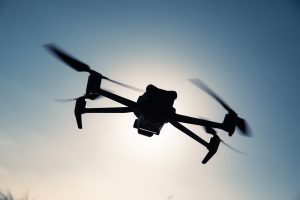The Indian border state of Manipur has been rocked by violence again, now in the form of attacks through weaponized drones. This is an unprecedented development in the country.
Ethnic riots between the majority Meiteis and Kuki-Zo communities had continued intermittently since May last year, killing over 200 and displacing 60,000 people.
The drone attack on September 1 broke a brief lull of three months in the restive state. The attack on Koutruk in Imphal West, contiguous to Kangpokpi district, came from the neighboring hills and killed two people while injuring nine others. Imphal West is inhabited by the Meiteis and Kangpokpi is home to the Kuki community.
Three people were injured in another drone bomb attack at Senjam Chirang the next day. Assailants also snatched two assault rifles and a light machine gun from the Indian Reserve Battalion (IRB) after an attack on its post at Sagolmang in Imphal East district.
Four days later, on September 6, militants fired two rockets, killing one person in Bishnupur.
Amid these attacks a video was posted on social media in which armed men claiming to be Kuku-Zo village volunteers warned Meitei militants against laying ambushes on the Kangpokpi-Churachandpur road and areas in Kangpokpi, Churachandpur, and Tengnoupal districts. The Meitei militants were instructed to vacate these places within three days or face consequences.
The Manipur Police termed the drone attack as “unprecedented” and said it marked a “significant escalation” in the conflict in the state. Further, the involvement of “highly trained professionals possibly with technical expertise and support” cannot be ruled out, the police added.
According to media reports, the weaponized drones can operate from distances ranging between 500 meters and 15 kilometers. They can be loaded with explosives, including hand grenades and mortar bombs, and have a rotor system, allowing them to also capture images.
The police have formed a high-level committee to “critically examine and study” the weaponized drones believed to have been used by Kuki militants to drop bombs. The committee will probe the available evidence and the specifications of the drones to find ways and means to counter such attacks.
The government has mobilized 198 companies of central forces in addition to the Assam Rifles to address the law and order situation in the state. An anti-drone system, Dronaam, has been deployed along the vulnerable zones in the inter-district border areas. The equipment is part of a broader apparatus that includes the deployment of new, domestically developed integrated drone detection and interdiction systems (IDD & IS).
Thousands of people, including students from schools and colleges, took to the streets across five districts of Manipur’s Imphal Valley to protest against the recent drone and gun attacks. Protesters also expressed discontent with the government’s handling of the ongoing conflict in the state.
On September 5, the Coordinating Committee on Manipur Integrity (COCOMI) served a five-day ultimatum to the central forces deployed in Manipur to initiate stringent security measures against Kuki militants responsible for the drone bomb attacks.
An elderly Kuki activist associated with a civil society organization in Manipur has denied the involvement of members of his community in the drone attacks. He admitted that functionaries of some rebel Kuki outfits were involved in the violence at Jiribam on September 6 in the state that killed five persons.
The uneasy relationship between the Meitei and the Kuki-Zo communities in Manipur has persisted for many years, but the trigger for the recent violence came in April last year after the High Court ordered the state government to recommend the inclusion of the Meitei community in the Scheduled Tribe category to the central government.
Violence erupted on May 3 in the state following a protest march against the judgment by members of the Kuki and Naga tribes, who inhabit Manipur’s hills. Meitei residents were targeted in areas dominated by the Kuki-Zo in the hill districts and the latter in the zones of Imphal Valley.
After the latest attacks, security agencies and the police have been making efforts to identify the source and technology of the weaponized drones. An official of a security agency claimed that the drones were “not military grade” and said they were assembled in Manipur from parts sourced from different regions. Incidentally, police in the neighboring state of Assam arrested a person in June with equipment used for making drones. The accused hailed from Kangpokpi in Manipur.
“The technology is not very complicated. Weaponized drones have been used with great success at several places by resistance groups in Myanmar,” the official said and referred to the involvement of several Manipuri militant outfits in the conflict in the neighboring country. “So the availability of the technology in Manipur,” he said, “is not surprising.”
The use of weaponized drones marks an alarming development in the conflict in Manipur. The violent episodes in the state over the past few days reveal the hollowness of claims made by Manipur Chief Minister N. Biren Singh that peace will return within six months. Before the latest attacks, there was also speculation about a breakthrough being made by the emissaries appointed by the chief minister. It remains to be seen if the government can actually come up with effective measures to curb violence and bridge the divide between the Meitei and Kuki-Zo communities in Manipur.

































